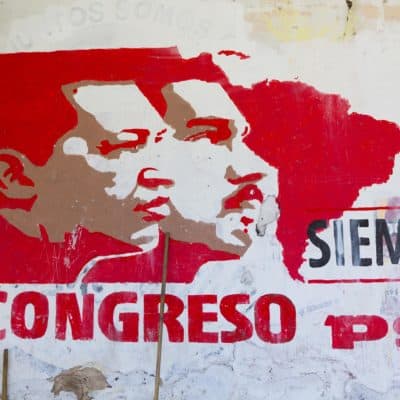By Michael Armstrong
Perhaps no other organization on earth has wielded influence or generated controversy on the scale of the Roman Catholic Church. Likewise the Roman Empire, from which it sprung, is nearly beyond comparison in the annals of history. This Empire has been the single greatest influence on western thought, customs, and institutions. The Catholic Church, worthy of its heritage, continues to exercise an authority that transcends borders. It boasts the largest “Christian” congregation in the world with an estimated 1.2 billion adherents.
Today it is rocked by scandal of the most vile nature. Those who have studied its sordid past will hardly be alarmed by current revelations. The intrigue and depravity of the Catholic Church has penetrated the public consciousness to the point that most of the growth and progress made by Christians in relatively modern eras has been on account of protestants, those whose very identity is defined by rebellion against Catholicism.
To the uneducated, uninterested, or non-believing however, discerning differences between Christian sects is hardly worth the effort. Indeed, the beliefs and practices of the largest and most successful protestant denominations are virtually indistinguishable from the organization they have “protested” against. For this reason, the entire perception of Christianity is tainted by the degeneracy of the unholy charlatans who have claimed the headlines yet again.
Paul, in his letter to the church in Rome during his day, issued a sharp reprimand to those whose claims of purity and righteousness in contrast with their deeds had shown them to be hypocrites and had actually led to the truth of God being reviled among the gentiles. He wrote, “Thou therefore which teachest another, teachest thou not thyself? thou that preachest a man should not steal, dost thou steal? Thou that sayest a man should not commit adultery, dost thou commit adultery? thou that abhorrest idols, dost thou commit sacrilege? Thou that makest thy boast of the law, through breaking the law dishonourest thou God? For the name of God is blasphemed among the Gentiles through you, as it is written.” (Romans 2:21-24)
As these hideous stories continue to unfold, can there be any doubt about the injury sustained by any moral authority the Roman Church might retain? To many, they may never have had any in the first place. The damage is done to the children and young adults raised and educated, through no fault of their own, under such a system. How could it possibly retain their respect? Does this not factor into why countless millions have ceased to practice any form of religion? Sadly, all of Christianity suffers on account of these dark deeds. Even if the disillusionment were limited only to Catholics, it weakens a bloc who has typically stood for traditional values against social “progress.”
While these repercussions are lamentable, a tragedy among tragedies is that the Roman Catholic Church was ever considered “Christian” in the first place. Its traditions and accouterments prove it utterly worthy of its Roman heritage. Its history and that of the Empire are inseparable. A brief examination of the customs and beliefs extant at and before its inception reveal at great deal. Much light can be shed on how this powerful organization can be so at odds with the teachings of scripture, and how its highest echelons can be embroiled in such salacious debauchery.
Let it first be stated that “Catholic” by definition means “universal.” While it is not the only modern church to use this term to describe itself (others include Eastern Orthodox, Anglican, Lutheran, and some Methodists) it is not surprising that such inclusive terminology would be employed. Rome never shied away from adopting the deities or customs of those it conquered. Much of what was established in those days continues in modern times.
The days of the week, the months, the planets, all bear the names of their gods. Sol, Helios, and Luna all serve as the root for a great many English words. The root of Venus has manifested itself in such diverse terms as wish, wean, win, venison, venom, venerate, and, less surprisingly, venereal. Other words based on the names of gods include cereal, janitor, junior, juvenile, narcissist, aphrodisiac, gigantic, hyacinth, mentor, panic, siren, tantalize, and fortunate.
Most of our major holidays deserve a special study of their own. Such observances as the festival of Sol Invictus (the unconquerable sun) on December 25, and January 1 dedicated to Janus (the god of beginnings and endings, whose two faces looked into the future and the past) were covered with Christian meaning. Allegedly marking the birth and circumcision of Jesus Christ, they allowed the average citizen to accept the new religion of Rome without actually changing any of their customs.
This strategy characterized the growth of the Roman Empire. Instead of suppressing the cults and beliefs of the conquered, they fit them into the existing hierarchy of their religion. By preserving local traditions, even to the point of temple construction, they maintained social norms and promoted stability. An altar stone, now housed in a museum in Cologne, Germany, inscribed about the 2nd century AD provides us an example. It depicts a sacrifice, performed by a Roman and in typical Roman manner, to the goddess Vagdavercustis, who is most likely of German or Celtic origin.
This practice is also evident in the early development of Rome. Much was borrowed from the Greeks, who were their predecessors in world dominance. Greek belief divided governance of the earth into three realms: the sky, the sea, and the underworld ruled by Zeus, Poseidon, and Hades respectively. The Romans also elevated a triad above the multitude of deities, the first of which included Mars, Quirinus, and Jupiter. Quirinus was the founder Romulus made into a god, but Jupiter was supreme among the gods.
The lineup later changed to Jupiter, Juno, and Minerva. Jupiter remained premier in all matters and was given titles such as invictus, imperator, and triumphator. Juno was both Jupiter’s wife and sister. As queen of the gods she was given a great many roles over time, including war and the preservation of the Empire. She was always of great importance to women and her care of the state was portrayed in matronly fashion. Some of her primary functions included childbirth and fertility, and she came to be associated with many rites of this nature in February.
Her own festival was at the beginning of March, intentionally coinciding with the renewals brought by spring. Her son Mars was allegedly conceived by a magical flower. These days the Roman Catholic Church promotes its own spring festival, again thinly veiled with Christian theology. The accouterments, lilies, eggs, etc., are inescapable links to the practices of ancient Rome.
Third in the Capitoline Triad, as it is called, was Minerva. Primarily associated with wisdom, her influence was applied to strategy, music, poetry, medicine, commerce, and many crafts. The owl was her “sacred creature,” on account of which owls are symbolic of wisdom to this day. Minerva is still prominently featured in modern education institutions. Hundreds of universities, among them some of the most prestigious in the world, feature her image in their seals and use her name for their buildings or programs.
A statue of Minerva is at the center of the Sapienza University of Rome. This university was founded in 1303 by Pope Boniface VIII for ecclesiastical studies. It is currently one of the premier educational institutions in Europe and among the best attended. She appears on the seal of California, whose statehood being granted without previously being a territory was equated to Minerva being born fully grown. The Congressional Medal of Honor, the highest honor and decoration available to a member of the United States Military, also features her image.
The extent to which western life features relics from the Roman Empire makes the links between ancient and current religious belief all the more obvious. The ancient Romans worshiped a triad, the Roman Catholics worship a trinity. With their festivals largely intact, a group of three still supreme, and many of their other traditions preserved, transitioning to “Christianity” probably didn’t involve many practical changes for the average Roman.
The story of Emperor Constantine and his role in advancing Christianity towards becoming the religion of Rome is well known. Disagreement among the various churches, not helpful in promoting the unity necessary in maintaining an empire, led him to personally intervene and chair the famous Council of Nicea in 325 AD. The trinity was one main issues before the council, others included Sunday worship and Easter. Evidently ecumenical agreement did not prove to be enough as shown by Constantine’s edicts, such as against the Arians and against heretics.
While some scholars doubt the legitimacy of Constantine’s own conversion, it is undeniable that he paved the way for Christianity to become the religion of Rome, however spurious the version they adopted. At his death it was said that he ascended to heaven, certain believers were even criticized for offering sacrifices before his statues.
This calls to mind the traditions of the Imperial Cult often called emperor worship. It began with the first emperor, Augustus. Succeeding the republican era of Roman history, Augustus became emperor in 27 BC. In this role he also assumed the title of chief priest, which continued with subsequent emperors. Though he resisted their efforts during his life, after death the Senate voted to deify him. Many future rulers would also have this honor bestowed upon them.
The Catholic Church goes through a similar review process before recognizing an individual’s sainthood. It involves a thorough review of life and character. Evidence of a miracle being performed after praying to the saint is required for beatification except in cases of martyrdom. The process is long and canonization cannot occur until after a second miracle occurs.
Saints are considered particularly efficacious in situations they are known to have experienced in life. There are a great many patron saints for certain locations or particular professions. Having a multitude of heavenly beings to invoke dependent on circumstances was part of life in polytheistic Rome. Even the earliest Romans believed they were watched over by their ancestors. Other beliefs about the afterlife are not incongruous with church dogma.
Continuity in the approach to prayer is remarkable. Proper formula was stressed above all else. Even privately, recitation dominated the expression of personal need or desire. Today use of the rosary and the responsive readings of mass are familiar to any practicing Roman Catholic. Ancient public rituals were even more demanding, requiring trained professionals. For this they had the College of Pontiffs (Collegium Pontificum) consisting of the Pontifex Maximus, the Rex Sacrorum, the Flamens, and the Vestal Virgins.
Does that ring any bells? Because bells were in fact rung. Such a multitude of religious paraphernalia existed, some of it quite vulgar, that it nearly defies comprehension. One cannot find the use of an ancient religious object such as the tintinnabula anywhere in modern life except in the ceremonies of the Roman Catholic Church. Phallic symbols were common in pagan culture, how is it that attaching one to the roof of a building now signifies that it is a place of Christian worship?
An obelisk (read phallic symbol) is one of the defining icons of St. Peter’s Square in the Vatican. It is Egyptian in origin, constructed possibly around 2500 BC, and was moved from Heliopolis (a center of sun worship) to Alexandria by Emperor Augustus during his reign. Later, the infamous Caligula brought it to Rome and placed it in the center of what would become known as Nero’s circus. Transferred to its current location in 1586, it didn’t have to be moved far as the Vatican now occupies much of the same ground. This was accomplished at the direction of Pope Sixtus V.
Sixtus V must have been quite the obelisk fanatic as he is also responsible for erecting a number of others. He transferred one from the Circus Maximus, originally taken from the temple of Amun in Karnak, to Lateran Palace, an ancient palace of Roman Emperors that became the main papal residence. He also moved the Flaminio and Esquiline obelisks. Popes Pius VI, Clement XI, Alexander VII, Clement XIV, and Pius VII all had obelisks transported as well. The Pantheon, itself a former temple now used as a Roman Catholic Church, received one belonging to a temple for Isis.
Occupying the same land, using the same buildings to celebrate the same holidays with the same rituals, the Roman Catholic Church remains an empire in its own right. It rules a sovereign state, participating in world affairs on par with other nations. This is part of the reason the misdeeds of its clergy have so long gone unpunished or remained unknown. The silence of victims has been paid for while the perpetrators are secreted away. This pattern of abuse, in its very nature, has its roots in antiquity as well, as will be evidenced by the deviance of their predecessors.
The history of the Roman Empire is so long, and its borders so large, that no single statement can define what sorts of practices were typical to its entirety. There were times when heterosexual monogamy was encouraged as the basis for the healthy growth and foundation of the empire. Celibacy was required in certain cults and sects, such as the Vestal Virgins. On the whole however, there was ample opportunity for decadence.
Both slavery and prostitution existed, legally, throughout the Empire. Slaves were the absolute property of their masters and could be subjected to any degradation. Both male and female prostitutes were ever available. Carnal exploits with a slave or prostitute of either gender was an unremarkable fact of life. Notable citizens of the highest standing could engage in them without the slightest loss of reputation. For a married man to engage in such pursuits was not even considered adultery, which term they only applied to relations with a married woman. There were no moral taboos associated with these actions.
Deities were not all the Romans borrowed from Greece. Pederasty remained one of their predilections. It was common for young male prostitutes to use Greek names, regardless of where they were from. Tales of their gods included such unnatural couplings, as in the case of Zeus and his cup bearer Ganymede. In earlier times, males between the ages of 13 and 20 participated in such relationships, with much older men, as an initiation to adulthood. These associations were considered advantageous both socially and economically.
To anyone who holds to the moral teachings of scripture, such occurrences are abhorrent. Yet the Roman Catholic Church is currently plagued by scandals of the exact same nature. Are they not worthy of their history in every way? How can they possibly claim to represent the true God, and be the church founded by Jesus Christ, when the defining aspects of their religious practice are so firmly rooted elsewhere? Jeremiah 10:2 includes the phrase, “learn not the way of the heathen.”
God has never failed to punish his people when they forsook His commandments and observances, and instead indulged in the customs of their neighbors. Is it not worse yet to take those customs and claim they honor the true God? Hundreds of Priests have abused thousands of children in Pennsylvania alone. Acts so disgusting you can hardly bear to consider. What if the extent were known worldwide?
The world desperately needs the pure truth and guidance of scripture. This hypocritical monolith, an antiquated amalgamation of the vilest nature, is not fit to represent or lead the Christian world. Truth is readily available to those who seek it. We can only pray that those who have suffered the most find their way out from under the oppressive deeds and dogma of these wolves in sheep’s clothing. The wrath of the Shepherd will surely find them out.










